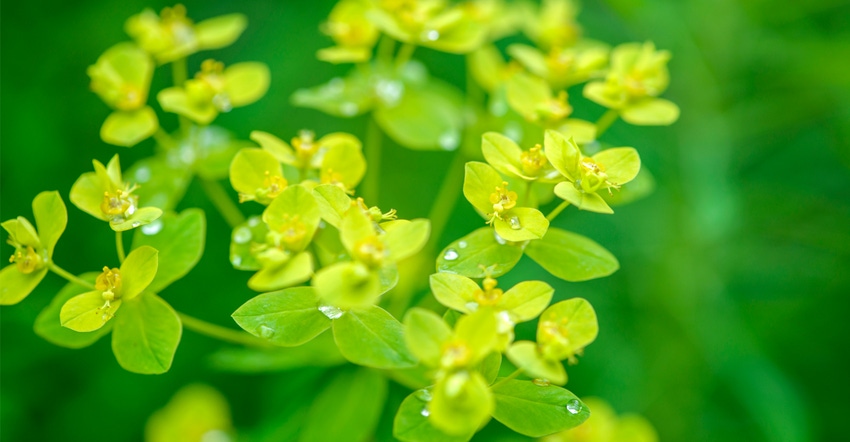June 8, 2021

Yellow-green patches in a pasture might look pretty for the uninitiated, but the telltale bloom of leafy spurge is not a spring sight many of us want to see.
While there are many plants livestock producers may consider pasture weeds, one that is particularly disliked is leafy spurge. Besides being on the Nebraska noxious weed list and requiring control, this hardy perennial spreads aggressively through seeds and root buds. With an extensive root system that can reach depths up to 15 feet, once established spurge is hard to control.
While biological and cultural control methods may provide some reduction in growth and seed production, those wanting complete control might consider an herbicide treatment as the best option.
Multiple chemicals have action on spurge. However, for spring treatments, control at bud or true flower stage is recommended. Early application at the bud stage is limited to 2,4-D ester or Gunslinger/Grazon P+D. A later flower stage application opens up the options to Curtail/Cody/Stinger, Streamline, a mix of Sharpen + Plateau or a mix of Overdrive + Tordon.
Unfortunately, a single treatment will not control spurge, so continued monitoring and retreatment is necessary. An effective strategy is pairing spring applications that prevent seed production with a fall treatment to control new growth.
Leafy spurge can easily take over a pasture, but with vigilance and regular treatment, control can be achieved.
Beckman is a Nebraska Extension educator.
Source: UNL Forage and Pasture Minute, which is solely responsible for the information provided and is wholly owned by the source. Informa Business Media and all its subsidiaries are not responsible for any of the content contained in this information asset.
You May Also Like




